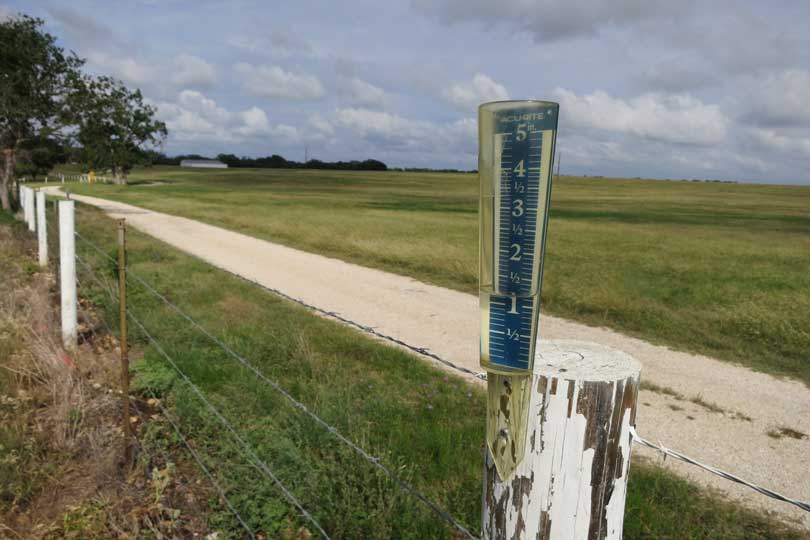By Justin Walker
Communications Specialist
Recent showers and storms brought much needed moisture to the Lone Star State.
Only about 20 percent of the state is experiencing some level of drought conditions, down nine percent from a week ago and the lowest value since November 2017, according to the most recent Water Weekly report.
“We are experiencing much different weather patterns and environmental conditions across the state,” Tracy Tomascik, Texas Farm Bureau associate director of Commodity and Regulatory Activities, said in an interview with the Texas Farm Bureau Radio Network. “If you think back to a couple weeks ago, the drought monitor had a lot of red, yellow and brown in it. Today, we are looking at a very different map.”
Stock tanks across the state have benefited from substantial rains over the past week, Tomascik said. Livestock water supplies have improved in most places, with West Texas and the Panhandle being slight exceptions.
“There is still a lot of room to make things as good as farmers and ranchers would like,” he said. “Stock tanks are not full, but they are much better than what they were a month ago.”
The change in weather patterns has helped ranchers specifically, allowing many to postpone supplemental feeding. Tomascik said the benefits of this are twofold.
“It gets cattle out and lets them forage and graze as they should in a normal setting,” Tomascik said. “It also allows farmers to have the opportunity to store a little more hay and supplements for the harder winter months that are ahead.”
Considerable amounts of moisture in South Texas and the Coastal Bend region have helped pasture and range conditions reach a 69 percent fair-to-good rating by the U.S. Department of Agriculture. While some have received more than they were hoping for, Tomascik said most are in a good situation.
“The additional rainfall they have received in those areas has been a blessing in most cases,” he said. “I think that most people are very happy to have the additional rainfall and the extra forage as we move into the fall growing season.”
The continuous rainfall for the region, Tomascik noted, has negatively impacted cotton harvest, leaving farmers looking for some dry weather to get their crop out of the fields.
In addition to flooding concerns, the rain and cooler weather have created ideal conditions for fall armyworms.
“Armyworms have come back with a vengeance this year, and the weather conditions have allowed them to do so,” Tomascik said. “They have been really nice for the hatch and growth of those insects. If we don’t get them under control in a very quick manner, then farmers and ranchers stand to lose a significant amount of forage production.”
While most of the state has received ample amounts of rain over the last month, West Texas and the Panhandle are still dealing with significant drought conditions, Tomascik said.
“Those folks are still hurting for water, but they are very resilient and are accustomed to dealing with these types of conditions,” he said. “We hope that they’re prayers get answered and they get some much needed moisture in the near future and are able to get into production on a more routine basis.”
On average, farmer and rancher attitudes have improved with the weather, Tomascik said.
“Give it a week after a good shower in the fall with decent temperatures, and the brown and barren look to the farms and ranches across the state can turn into green, flourishing areas,” he said. “I think attitudes reflect that, as well. I think things are positive as we move into the fall.”

